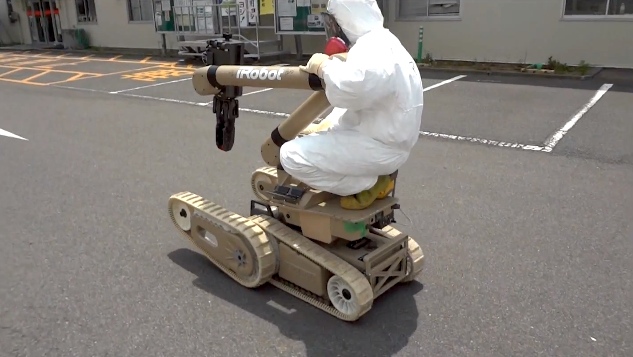An anonymous blogger known only as S.H. has been posting detailed daily descriptions of the robot-based disaster response effort at Fukushima. The blog included technical details and personal anecdotes, but nothing sensitive to national security. In early July, however, the blog was discontinued and later deleted altogether. The videos S.H. had uploaded to YouTube were made private. The origin of this purge is unknown, though it’s certainly conceivable that higher-ups felt the blog was too revealing and asked that S.H. take it down.
You can’t delete something from the internet without anyone noticing, however, especially a blog like this, full of interesting and timely information related to the ongoing reactor containment efforts. So when it disappeared, IEEE Spectrum took it upon themselves not only to save a cached version of the blog, but to translate it and republish it. It’s a powerful demonstration of the durability of internet-based media — and an interesting read in its own right.

The blog is a mix of technical commentary and the normal human aspect of the job. Here are a few excerpts, to give you the flavor (formatting mine to save space):
Today, along with charging the batteries of the robots, it was my turn for training. I did operate them a little yesterday, though. The training takes place in a low radiation outdoor area, but we wear full radiation protection clothing and gear, which diminish my thinking abilities. Ordinarily, I’m not good at thinking (LOL). The training is designed to replicate as close as possible the actual task. First I tried to open a heavy steel door (with a common round knob). They said that I was the first person to succeed in opening a door with such a knob, in fact.
Today we went and used two PackBots to measure the radiation levels on the first floor portion of the No. 3 nuclear reactor building where the Warrior cleaned (decontaminated) yesterday.
As a result, the radiation levels dropped on average about 10%.
If you are just looking at the measurement results, they still look pretty high, but on the other hand, if you just look at the difference [in certain areas], you get the feel that it was quite effective.
There are places where the level dropped to a maximum of 80 Sv/h.
The first one who got up to go to the bathroom, Mr. S, said, “Hey, there’s someone else here. Who’s that?” So I got up to look, and there was someone sleeping on the tatami floor. . . I looked at his face and didn’t recognize him. I woke him, asking, “Who are you? Are you in the right room?” He was kind of confused as well.
“? ? ?”
“What room is this?” he said sleepily.
He smelled a little of alcohol, so he probably got drunk and slept in the wrong room.
You get the idea. There are pictures of the operating environment, the bots, and so on. All in all, a valuable record of the recovery and cleaning effort around the reactors. One commenter at IEEE who works with the same robots has already mentioned he found some useful information — from an abridged, incomplete translation! While I can understand that this kind of thing should also be shared within the operator’s official environment (reports and such), this blog was clearly a non-destructive outlet for unofficial information.
The pictures and video were also retained:
The blog disappeared in July and as yet no one has commented. Interestingly, it doesn’t really signify whether it was shut down voluntarily or because of pressure from S.H.’s supervisors. The fact is that because it was worth something to someone, the deletion of this content was out of their hands.
It’s a form of internet archaeology. In fact, a site by that name was formed to enshrine the kitch goldmine that was Geocities. And while that was a bit of a lark, the principle applies equally to more serious content, like S.H.’s blog. Content that manages to disappear from the internet is usually pretty meritless. Truly sensitive information, like that released by Wikileaks or black hat hackers, is nearly impossible to eliminate completely.

What is the endgame here? Polarization. If official government programs have to worry about their workers’ personal blogs, they may simply forbid them from having them at all. On the other hand, to satisfy the thirst for real-time information and “transparency,” more official channels for this kind of data will have to be set up. Will these channels be closely regulated? Yes. Will they be as revealing and interesting as blogs like S.H.’s? No. Will they be better than what we had five years ago? Probably. There will always be a demand for deep-undercover anonymous bloggers and the like, but the methods to suppress and the methods to create are in a constant arms race. Sometimes you’ll be able to get it from the tap, but sometimes you’ll have to get it bottled, as it were.
In the meantime, if you’re at all interested in the cleanup effort or practical robotics in general, do check out the entries IEEE has translated. If you speak Japanese, you can see some of the posts mirrored here, and the Google cache is still partially intact.
